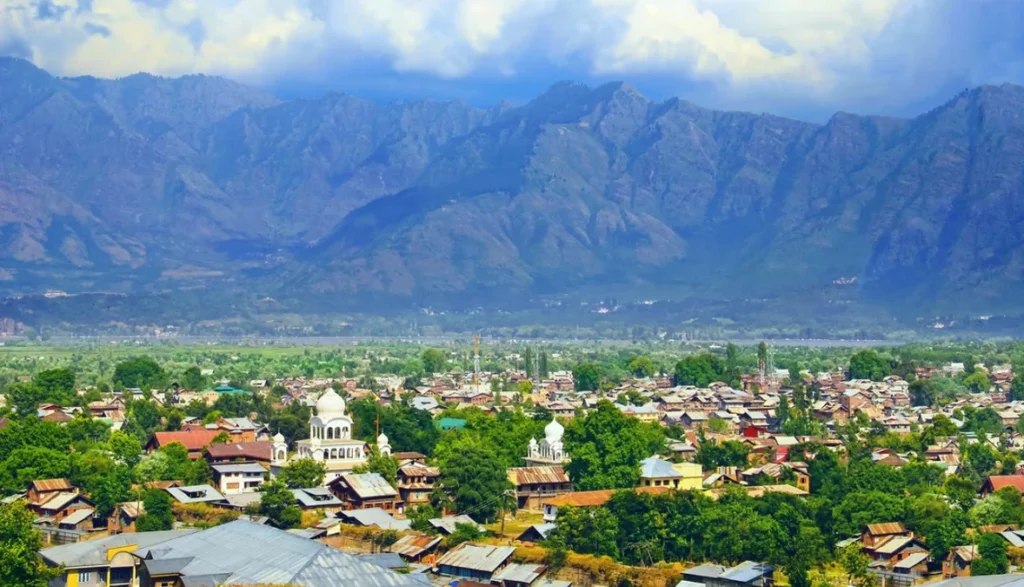“Explore Samba District, known for its rich history, scenic landscapes, vibrant culture, and historic landmarks like the famous Samba Fort in Jammu & Kashmir.”

Samba District: A Glimpse into Vibrant Culture and Progress
Nestled in the picturesque landscapes of the Jammu region, Samba District stands as a testament to the rich cultural heritage and rapid progress of the area. Known for its historical significance, cultural diversity, and economic growth, Samba District has emerged as a prominent hub in the northern part of India.
Historically, Samba District has witnessed the rise and fall of various empires, leaving behind a tapestry of stories that shape its identity. The district’s proximity to the iconic Raja Suchet Singh Palace, a marvel of architecture, serves as a reminder of its royal past. This palace, with its intricate design and grandeur, continues to attract history enthusiasts and tourists alike.
Cultural diversity is a cornerstone of this District’s identity. The district is a melting pot of various communities, each contributing to the vibrant tapestry of traditions and festivals. The Baisakhi festival showcases the district’s agricultural roots, celebrating the harvest season with great fervor. Additionally, the Navratri festival brings together people of all ages to participate in the colorful and energetic Garba dance, fostering a sense of unity and joy.
In recent years, This District has experienced remarkable economic growth, transforming it into an industrial and commercial center. The establishment of industrial estates has attracted numerous businesses, contributing to job creation and economic prosperity. The district’s strategic location along major trade routes has further enhanced its potential as a trade and commerce hub.
Education and innovation are also thriving in Samba District. The emergence of educational institutions and vocational training centers has empowered the youth with knowledge and skills, preparing them for the challenges of the modern world. This focus on education has led to a generation of young minds eager to contribute to the district’s growth and development.
Infrastructural development has been a key priority for Samba District. Modernization of roads, bridges, and connectivity has facilitated easier access to remote areas and improved the overall quality of life for residents. Additionally, the district’s efforts in harnessing renewable energy sources have not only promoted sustainability but also positioned Samba as a forward-thinking region.
The district’s administration has worked diligently to promote tourism, recognizing its potential to boost the local economy. From eco-tourism initiatives that highlight the region’s natural beauty to promoting cultural festivals and historical sites, Samba District is welcoming visitors with open arms.
In conclusion, Samba District encapsulates the essence of a region that cherishes its past while embracing the opportunities of the future. With a vibrant cultural heritage, rapid economic growth, and a commitment to education and innovation, the district stands as a shining example of progress. As Samba continues to evolve, it is poised to leave an indelible mark on the tapestry of India’s diverse landscape.
Famous Places in Samba District
Samba District is adorned with a plethora of famous places that highlight its historical, cultural, and natural beauty. From royal palaces to serene landscapes, here are some notable destinations:
Raja Suchet Singh Palace: A majestic testament to the district’s royal past, this palace showcases intricate architecture and offers a glimpse into the lives of the erstwhile rulers. Its grandeur and historical significance make it a must-visit site.
Bari Brahmana Temple: This ancient temple is dedicated to Lord Shiva and is a significant religious site for locals. Its serene surroundings and architectural charm draw devotees and tourists alike.
Sukrala Mata Temple: Nestled amidst lush greenery, this temple is dedicated to the revered Goddess Sukrala. The temple’s tranquil atmosphere and panoramic views make it a peaceful retreat.
Ghagwal Village: Known for its historic monuments and archaeological remains, Ghagwal Village offers a glimpse into the past. The ancient fort and temples here are a testament to the district’s cultural richness.
Purmandal: Often referred to as “Chhota Kashi,” Purmandal is famous for its temples dedicated to Lord Shiva and Goddess Parvati. The annual fair held here attracts devotees and tourists from far and wide.
Basohli Fort: Although technically located just outside Samba District, Basohli Fort is worth mentioning due to its proximity. The fort’s architecture and historical significance make it a noteworthy site.
Birpur Spring: A natural spring surrounded by lush greenery, Birpur is a tranquil spot for picnics and relaxation. The cool and serene ambiance attracts both locals and visitors.
Baisakhi Festival Grounds: Samba District comes alive during the Baisakhi festival. The festival grounds host vibrant celebrations, including folk performances, music, dance, and traditional fairs.
Chichi Mata Temple: Perched atop a hill, this temple offers panoramic views of the surrounding landscape. The temple’s architecture, combined with the scenic backdrop, makes it a popular destination.
Samba City Park: For those seeking recreational activities, Samba City Park is an ideal spot. It offers green spaces, walking paths, and playgrounds for families and individuals to unwind.
From its regal past to its religious significance, Samba District’s famous places reflect its diverse cultural tapestry and offer something for every kind of traveler. Whether you’re interested in history, spirituality, or simply enjoying the natural beauty, Samba District’s attractions are sure to leave a lasting impression.
Read More :-
